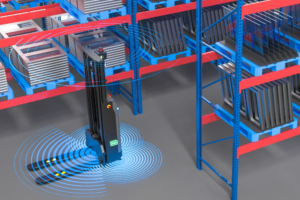As businesses grow increasingly reliant on digital infrastructures, performance metrics play a critical role in evaluating the efficiency of IT systems. One such crucial metric is IOPS, or Input/Output Operations Per Second. What is IOPS – often discussed in the context of storage systems, databases, and cloud computing, IOPS is a key performance indicator that measures how effectively a system can handle read and write operations. This guide will help you understand what IOPS is, why it matters, and how it impacts IT performance.
Understanding IOPS: What Does It Mean?
IOPS stands for Input/Output Operations Per Second, a performance metric used to measure the number of input and output operations a storage system can perform in one second. These operations include read requests (retrieving data) and write requests (storing data). It is primarily used to evaluate the speed and efficiency of storage systems, including hard disk drives (HDDs), solid-state drives (SSDs), and cloud storage services.
IOPS is crucial in determining how well a storage system can handle data-intensive tasks, such as running a database, supporting virtual machines, or processing large-scale transactions. High IOPS values indicate that a system can manage more operations simultaneously, resulting in faster performance.
How is IOPS Measured?
IOPS is calculated by considering several factors that influence a storage system’s performance. These factors include:
- Block Size
The size of the data blocks being read or written significantly impacts IOPS. Smaller block sizes generally result in higher IOPS values because more operations can be performed within the same time frame. Conversely, larger blocks take longer to process, reducing IOPS.
- Read/Write Ratio
IOPS performance varies depending on the proportion of read and write operations. Many systems perform read operations faster than write operations due to the way data is stored and retrieved. A common testing scenario is a 70/30 read/write ratio, simulating real-world workloads.
- Sequential vs. Random Access
Sequential access involves reading or writing data in a continuous order, which typically results in higher IOPS. Random access, where data is accessed in a non-sequential manner, is more demanding and often leads to lower IOPS.
- Latency
Latency refers to the delay between a request and the completion of an operation. Lower latency improves IOPS, as the system can process more operations within the same time.
- Queue Depth
Queue depth is the number of input/output requests that can be processed simultaneously. A higher queue depth allows for more operations to be handled concurrently, increasing IOPS.
Why is IOPS Important?
IOPS is a critical metric for IT professionals, as it directly impacts the performance of applications and systems that rely on storage. Here are some key reasons why IOPS matters:
- Optimizing Storage Performance
High IOPS values ensure that storage systems can handle demanding workloads without delays, improving the overall performance of applications and services.
- Supporting Critical Applications
IOPS is particularly important for applications requiring fast and reliable data access, such as databases, virtual desktop infrastructure (VDI), and analytics platforms.
- Ensuring Scalability
As businesses grow, their storage requirements increase. Monitoring IOPS helps IT teams ensure that storage systems can scale effectively to meet future demands.
- Enhancing User Experience
Faster storage performance leads to quicker response times for end-users, enhancing the overall user experience for applications and services.
IOPS in Different Storage Types
Different storage technologies offer varying levels of IOPS performance. Here’s a quick overview:
- Hard Disk Drives (HDDs)
Traditional HDDs typically have lower IOPS due to their mechanical components, such as spinning disks and moving read/write heads. A standard HDD may deliver between 50 to 200 IOPS.
- Solid-State Drives (SSDs)
SSDs, which use flash memory, provide significantly higher IOPS compared to HDDs. Depending on the model and configuration, SSDs can achieve tens of thousands to hundreds of thousands of IOPS.
- Cloud Storage
Cloud providers offer a range of storage options with varying IOPS capabilities. Services like Amazon Elastic Block Store (EBS) allow users to select performance levels, such as Provisioned IOPS, to meet specific workload requirements.
- NVMe Drives
Non-Volatile Memory Express (NVMe) drives offer the highest IOPS among storage types, as they are designed for high-speed data transfer and low latency. These drives are ideal for applications requiring extreme performance, such as AI, machine learning, and high-frequency trading.
Use Cases for IOPS
IOPS plays a vital role in a wide range of IT scenarios. Some common use cases include:
- Database Performance
Databases require high IOPS to handle complex queries, transactions, and updates efficiently. Monitoring IOPS ensures that database systems can deliver consistent performance.
- Virtual Machines
Virtualization environments rely heavily on storage performance. High IOPS values enable virtual machines to run smoothly, even under heavy workloads.
- Big Data and Analytics
Big data platforms process massive volumes of data in real-time. High IOPS ensures that these systems can ingest, analyze, and retrieve data quickly.
- Content Delivery
For applications like video streaming and file sharing, high IOPS is essential to deliver content to users without delays.
- Backup and Recovery
Efficient backup and recovery processes depend on high IOPS to minimize downtime and ensure data availability.
How to Improve IOPS
If your storage system isn’t meeting the required IOPS for your workload, there are several ways to improve it:
- Upgrade to SSDs or NVMe Drives
Switching from HDDs to SSDs or NVMe drives can dramatically increase IOPS and reduce latency.
- Optimize Workloads
Analyze workloads to ensure that data is accessed sequentially whenever possible. Reducing random access can improve IOPS performance.
- Increase Queue Depth
Configuring storage systems to handle a higher queue depth can allow more simultaneous operations, boosting IOPS.
- Implement Tiered Storage
Tiered storage involves using a combination of high-performance and lower-cost storage options. Frequently accessed data can be stored on high-IOPS drives, while less critical data is stored on slower drives.
- Provisioned IOPS
In cloud environments, consider using services like Provisioned IOPS to guarantee performance for critical workloads.
Challenges in Understanding IOPS
Despite its importance, IOPS can be a complex metric to work with. Variations in testing methodologies, workload patterns, and hardware configurations make it challenging to compare IOPS across systems. IT teams should consider factors like latency, throughput, and application-specific requirements in addition to IOPS when evaluating storage performance.
The Future of IOPS
As IT environments continue to evolve, the demand for higher IOPS will grow. Emerging technologies like 5G, edge computing, and artificial intelligence will require storage systems with even greater performance capabilities. Innovations such as next-generation NVMe drives and software-defined storage solutions are expected to push IOPS boundaries further.
In conclusion, IOPS is a critical metric for measuring and optimizing storage performance in modern IT systems. By understanding and IOPS performance, businesses can ensure that their infrastructure meets the demands of today’s data-driven world. Whether you’re managing databases, virtual machines, or cloud applications, focusing on IOPS is key to achieving reliable and high-performing systems.















